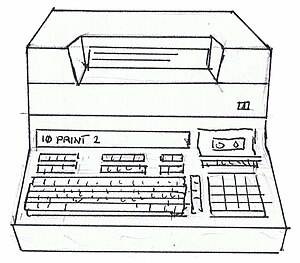This is the second in the series of QR Code blunders, which I think is not as bad as the first, but a little unfortunate given the worthy goal. This time around, Heinz Ketchup features a QR Code on restaurant squeezy bottles of ketchup, which can be scanned to quickly help you support veterans. The idea is that you scan the QR Code, and either 'like' Heinz Ketchup on Facebook or send a veteran an electronic postcard, and Heinz will make a 57 cent donation to the Wounded Warrior Project.
 Here is a photo of the bottle, sitting on the bar at a local watering hole. There is a nice blurb about the project and a decent sized QR Code to scan. Now, this restaurant has decent lighting, but I still have an older iPhone (the 3G), which does not have autofocus. Still, it can still take a decent enough photo and scan a reasonable QR Code. In this case though, the blunder is not in any of the instructions, or the size of the QR Code.
Here is a photo of the bottle, sitting on the bar at a local watering hole. There is a nice blurb about the project and a decent sized QR Code to scan. Now, this restaurant has decent lighting, but I still have an older iPhone (the 3G), which does not have autofocus. Still, it can still take a decent enough photo and scan a reasonable QR Code. In this case though, the blunder is not in any of the instructions, or the size of the QR Code.
In this case the blunder is a simple one: the QR Code contains a full length URL (not a nice shortened one), so the number of blocks that make up the QR Code are a great many more than is necessary, making them too small for older phones to pick out clearly. I'm not the only person in the world still toting an older iPhone or Android, which is why this is unfortunate.
When I got home, I did a little image manipulation to see what the QR Code contained. Here is the link I managed to get out of it:
http://www.heinzketchup.com/rd/btrestaurant
And please do take a look. There is nice mobile friendly website under it, and more importantly you too can add your own little contribution through a like or an e-postcard.
 Here is a photo of the bottle, sitting on the bar at a local watering hole. There is a nice blurb about the project and a decent sized QR Code to scan. Now, this restaurant has decent lighting, but I still have an older iPhone (the 3G), which does not have autofocus. Still, it can still take a decent enough photo and scan a reasonable QR Code. In this case though, the blunder is not in any of the instructions, or the size of the QR Code.
Here is a photo of the bottle, sitting on the bar at a local watering hole. There is a nice blurb about the project and a decent sized QR Code to scan. Now, this restaurant has decent lighting, but I still have an older iPhone (the 3G), which does not have autofocus. Still, it can still take a decent enough photo and scan a reasonable QR Code. In this case though, the blunder is not in any of the instructions, or the size of the QR Code.In this case the blunder is a simple one: the QR Code contains a full length URL (not a nice shortened one), so the number of blocks that make up the QR Code are a great many more than is necessary, making them too small for older phones to pick out clearly. I'm not the only person in the world still toting an older iPhone or Android, which is why this is unfortunate.
When I got home, I did a little image manipulation to see what the QR Code contained. Here is the link I managed to get out of it:
http://www.heinzketchup.com/rd/btrestaurant
And please do take a look. There is nice mobile friendly website under it, and more importantly you too can add your own little contribution through a like or an e-postcard.
What should the QR Code have looked like? Not like the one below that I extracted from the bottle. Way too many blocks.
Here is more what it should have looked like (I faked the blur and background on this for effect to show how larger blocks show up better). A shortened URL like the one that this contains ( http://cnsd.co/7vq ) takes just a few seconds to produce, and generates QR Codes that are readable in worse lighting by older phones.
 |
| Can't scan me? Browse to: cnsd.co/7vq instead |
The rule is to always, always shorten a URL before creating a QR Code. This gives you three benefits:
- a more readable image on more phones in poorer lighting or printing conditions
- the advantage of being able to track scans (how many, when, location, etc)
- a URL that is easier to type in on a mobile phone keypad if the user just can't scan the thing (11 characters rather than 40-ish)
For more information about QR Codes for effective mobile marketing and producing mobile websites to support them, visit http://consected.com/mobile
A post from the Improving It blog
Let us help you improve your business today. Visit www.consected.com






















